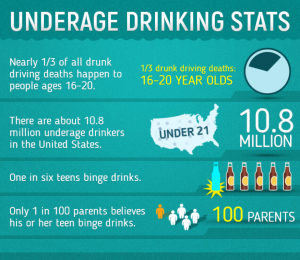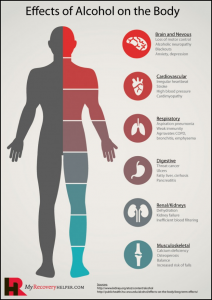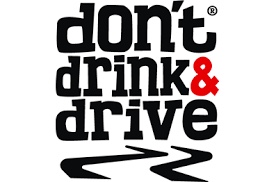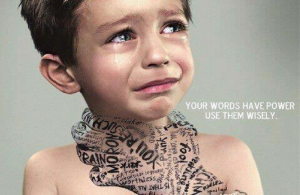Drugs & Alcohol Abuse Prevention
ALCOHOL: WHAT IS THE BIG DEAL?
Drinking alcohol can make you take risks you wouldn’t when sober. Taking these risks can lead to much more than a bad hangover; it can cause legal trouble with the police, problems with your parents and serious injury to yourself or others.Underage and binge drinking are the primary causes of this risky behavior. Drinking at an earlier age also increased the likelihood of developing an alcohol related disease/disorder later in life.
Talking to kids openly about alcohol and the risks of underage drinking can help reduce their chances of legal trouble and become problem drinkers.
what are the health risks?

Alcohol acts as a depressant on the central nervous system; long term effects of alcohol can be irreversible. The most commonly affected body parts are the brain, heart, lungs, liver (the easiest and most irreversibly damaged), kidneys, and the skeleton. Other places damage is common comes from the nervous system, stomach, and intestines.
BAC and impaired functioning
The biggest side effect of alcohol is impaired functioning. This means that you don’t think like you normally would and do things that you wouldn’t do sober such as driving at high rates of speed, jumping off bridges, and other activities that are highly dangerous to you and those around you.
peer pressure and friends
Peer pressure is very common when a person or person try to convince someone to do something; “c’mon it looks cool”, “everyone else is doing it”, “you won’t get in trouble or it”. Drinking alcohol is a personal choice. No one can force you to consume alcohol. Peer pressure is inevitable, but that doesn’t mean you have to give in; talk and make a strategy for what you can do if you are in a situation like this.
DRUGS: WHAT IS THE BIG DEAL?
Drugs can be both legal and illegal; however, drug use becomes a problem when a user abuses their right to a prescription drug or uses any form of an illegal drug. Drug use hurts users; it leads to AIDS, impaired coordination, stunted growth, isolation, paranoia, and an array of health effects. Not only does it physically harm the user, but it also take a mental toll on them and their friends and family.
COMMONLY ABUSED DRUGS:
Some of the more commonly abused drugs for teens are prescription drugs, inhalants, marijuana, cocaine and nicotine. These drugs are usually more readily available and accessible to teens for use making them easy to get.
marijuana:
 Marijuana is among the most commonly abused illegal substances addicting people with the chemical THC. Marijuana impairs memory
Marijuana is among the most commonly abused illegal substances addicting people with the chemical THC. Marijuana impairs memory
and certain motor functions eventually causing damage to the brain, lungs, respiratory system. ‘Medical marijuana’ is NOT FDA approved for two reasons; first, theres no evidence the health ‘benefits’ outweigh the inevitable health risks. Second, to be an FDA approved medicine, there needs to be consistent well-defined and measurable ingredients to make the medicine uniform. Street terms for marijuana include; pot, weed, Mary Jane, reefer, Ganja, herb, or hemp.
inhalants:
 Inhalants are another easily abused drug among teens because they can be found right inside one’s household. Inhalants are any aerosol chemicals that can be inhaled or ‘huffed’ to obtain a high; most often in the form of nail polish remover, spray paint, cleaners, and gasoline. These chemicals are extremely toxic and overtime will cause irreversible damage to the heart, lungs, kidneys and brain.
Inhalants are another easily abused drug among teens because they can be found right inside one’s household. Inhalants are any aerosol chemicals that can be inhaled or ‘huffed’ to obtain a high; most often in the form of nail polish remover, spray paint, cleaners, and gasoline. These chemicals are extremely toxic and overtime will cause irreversible damage to the heart, lungs, kidneys and brain.
prescription drugs:
 Prescription drugs are prescribed to one person for one specific reason whether it be to alleviate pain or to help cure a sickness. YOU SHOULD NEVER TAKE PRESCRIPTION DRUGS THAT AARE NOT YOURS AND YOU SHOULD ALWAYS FOLLOW THE INSTRUCTION PROVIDED . Prescription drugs are commonly abused because of the easy availability of often finding them in the medicine cabinet; generally opioids, CNS depressants, or stimulants. Taking more than prescribed or medication that is not yours can have serious health consequences including death.
Prescription drugs are prescribed to one person for one specific reason whether it be to alleviate pain or to help cure a sickness. YOU SHOULD NEVER TAKE PRESCRIPTION DRUGS THAT AARE NOT YOURS AND YOU SHOULD ALWAYS FOLLOW THE INSTRUCTION PROVIDED . Prescription drugs are commonly abused because of the easy availability of often finding them in the medicine cabinet; generally opioids, CNS depressants, or stimulants. Taking more than prescribed or medication that is not yours can have serious health consequences including death.
nicotine:
Commonly found in tobacco and cigarettes, nicotine is  a highly addictive substance that can hook users after only trying once. Health risks associated with nicotine use include emphysema, respiratory and cardiac system diseases, cancer and death. Smoking kills about 480,000 in the US prematurely every year; averaging about 1 in every 5 total US deaths. Smoking isn’t just danger to the individual, but also to those around them. It’s estimated that 41,000 people die annually just from second hand smoke exposure.
a highly addictive substance that can hook users after only trying once. Health risks associated with nicotine use include emphysema, respiratory and cardiac system diseases, cancer and death. Smoking kills about 480,000 in the US prematurely every year; averaging about 1 in every 5 total US deaths. Smoking isn’t just danger to the individual, but also to those around them. It’s estimated that 41,000 people die annually just from second hand smoke exposure.

KNOW YOUR VERMONT ALCOHOL LAWS!!
YOU MUST BE 21 YEARS OF AGE TO CONSUME ALCOHOL
buying alcohol under the age of 21 is illegal under Vermont Law and punishable with fines, court sanctions, and criminal charges.
providing alcohol to anyone under the age of 21 is illegal under Vermont Law punishable with criminal charges, fines, and court sanctions.

 driving under the influence of drugs or alcohol is illegal; it is deadly to you and those
driving under the influence of drugs or alcohol is illegal; it is deadly to you and those
around you. driving with a BAC of 0.08 or more is illegal under Vermont Law and punishable with criminal charges, an arrest record, and fines. driving at a 0.16 or higher will result in tremendously enhanced penalties. DO NOT DRINK AND DRIVE.
what is bullying?
Bullying is a recurring act involving unwanted, aggressive behavior that involves a real or perceived imbalance of power. Bullying includes actions such as making threats, spreading rumors, attacking someone physically or verbally, and excluding someone from the group on purpose. There are three main types of bullying; physical, verbal and psychological.
2. spitting
3. taking, breaking, or hiding someones things
4. making rude/inappropriate gestures
2. spreading lies and rumors about someone
3. making fun of someone in public
4. rolling eyes
5. dirty looks
2. insulting
3. taunting
4. threatening to cause harm
5. inappropriate sexual comments
ng overtime
who is a target for bullying? what are the effects of bullying overtime?
 Targets of bullying come in every shape and size imaginable; little or big reasons, or sometimes for no reason at all, people will bully others to make themselves feel better. 10 times out of 10, it is never the victims fault for being bullied. Generally, victims of bullying all have the same attributes; they are smaller or bigger than most other kids their age, they are perceived as different in some way, they have a beautiful name that is not considered ordinary, someone who will get anxious or upset easily, someone who is usually alone and don’t have many friends, and someone who doesn’t have a lot of self confidence and won’t stand up for themselves. Victims of bullying often attempts to fight back or respond to the bully in very ineffective ways. They are generally alone and do not get any support from bystanders. Effects of bullying can often lead to depression, anxiety, low self-esteem, Post Traumatic-Stress Syndrome (PTSS), ideas of suicide, or sometimes suicide itself.
Targets of bullying come in every shape and size imaginable; little or big reasons, or sometimes for no reason at all, people will bully others to make themselves feel better. 10 times out of 10, it is never the victims fault for being bullied. Generally, victims of bullying all have the same attributes; they are smaller or bigger than most other kids their age, they are perceived as different in some way, they have a beautiful name that is not considered ordinary, someone who will get anxious or upset easily, someone who is usually alone and don’t have many friends, and someone who doesn’t have a lot of self confidence and won’t stand up for themselves. Victims of bullying often attempts to fight back or respond to the bully in very ineffective ways. They are generally alone and do not get any support from bystanders. Effects of bullying can often lead to depression, anxiety, low self-esteem, Post Traumatic-Stress Syndrome (PTSS), ideas of suicide, or sometimes suicide itself.
bullying and the use of social media
Cyberbullying is becoming increasingly common with the growing presence of social media available to all ages. From Snapchat, Instagram, Facebook or Twitter, kids are always finding new ways to connect with friends and strangers. The easiest way to prevent cyberbullying is to monitor your child’s social media accounts; you can create your own and friend/add/follow them, or you can simply require they give you passwords to have the account. It also ensures that you know your child is safe and not talking to someone who is pretending to be someone else.
what you can do to prevent bullying:
1. NEVER BE A BYSTANDER; if you see something, say something. If you are a bystander, you are just as bad as the bully.
Be the person who breaks the cycle of bullying; listen to the victim, stand up for them, be the person who says stop, and show the bully they have no power. If you’re not comfortable speaking up to the bully, that doesn’t mean you don’t do anything. There are other ways you can help; speak to a trusted adult or submit an anonymous tip to the principal. By doing something, big or small, you’re saving a life.
Youth Depression and Suicide Prevention: How to Get Help and Help Others
Laurie’s House (802) 524-6576
National Suicide Prevention Hotline 1 (800) 273 8255
NorthWestern Counseling & Support Services st.albans (802) 524-6554 toll free (800)834-7793
Vermont 211 2-1-1
